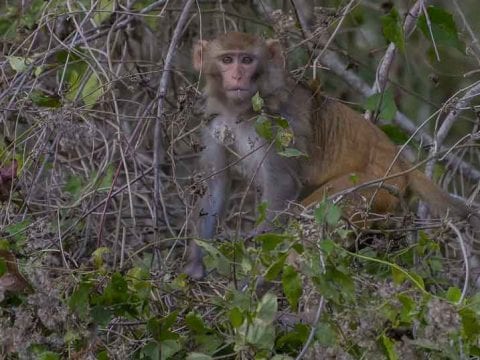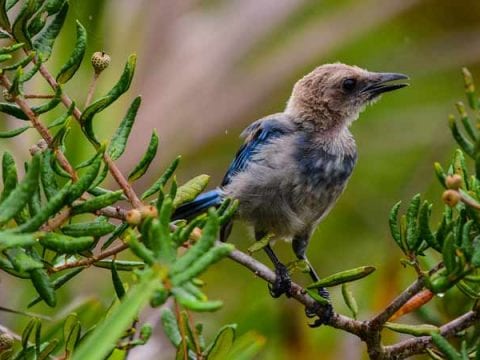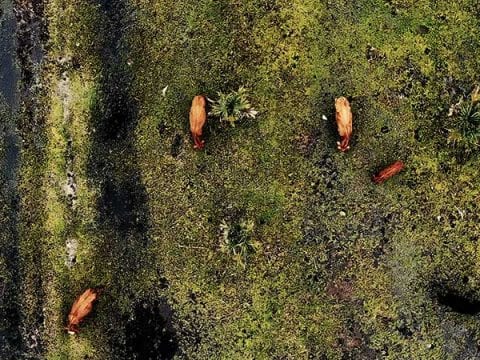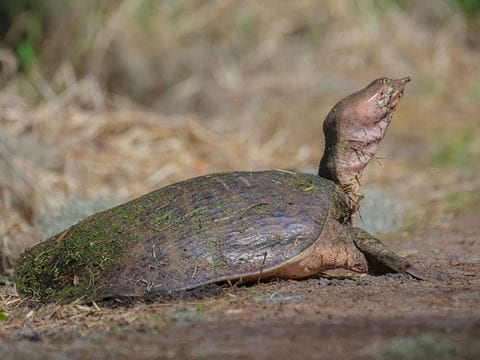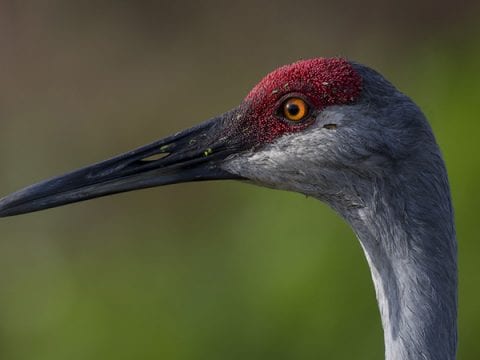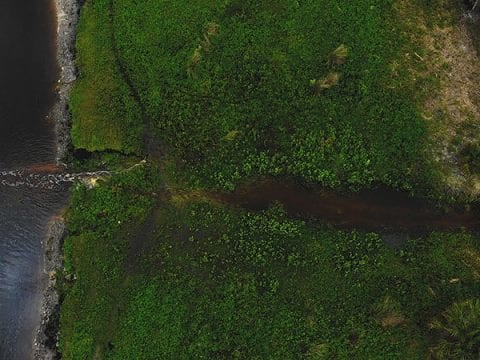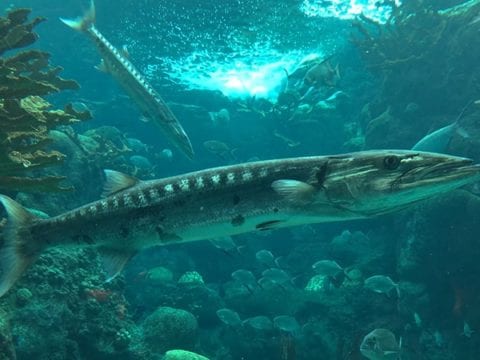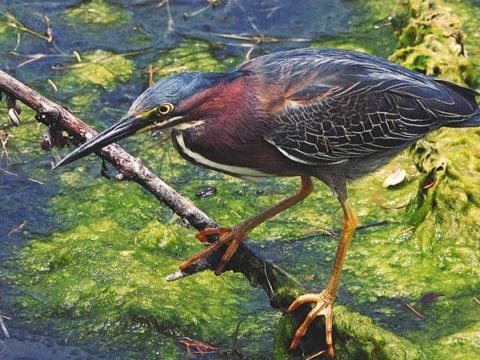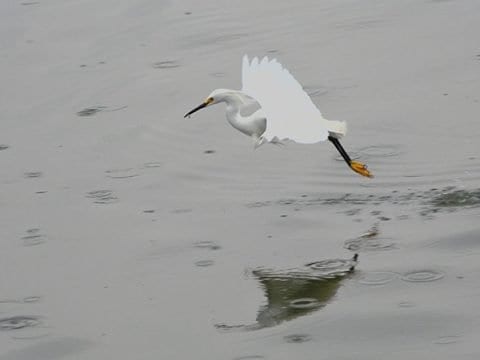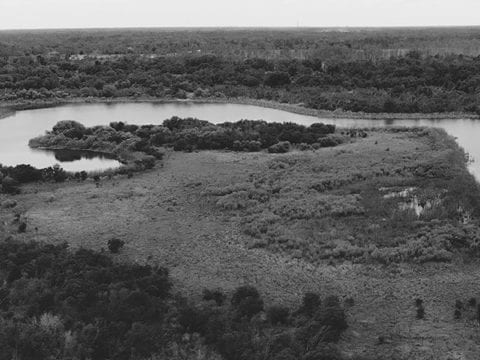Table of Contents
American Bison Facts
- American bison and wild horses can be found at the Payne’s Prairie Preserve State Park in Gainesville, Florida.
- In 1975, there was a herd of about 50-70 bison, which were from a group of 10 descendants that were released into Payne’s Prairie.
- They’re originally from Florida before the Spanish arrived, which drove them into the far south.
- The American bison became the national mammal of the United States in 2016.
- They are North America’s largest land animals. A bull (male bison) can weigh up to 2,000 pounds while a cow (female bison) can weigh up to 1,000 pounds.
- They have a huge hump on their heads that is composed of muscle alone so they can use their head to plow through the snow.
- There are 500,000 nationwide that are raised as livestock on ranches. Only about 30,000 are for conservation efforts and can be found in private and public herds.
- Fossils and stories from earlier travelers show that during prehistoric times, they lived continuously at the Yellowstone National Park.
- The Yellowstone herd still remain genetically free of cattle genes.
- Trails that were carved out by both bison and deer during their seasonal migration formed the paths that Native Americans, pioneers and explorers followed.
Identification
The American Bison, also known as either American buffalo or just buffalo from North America. Massive herds used to roam very freely over the grasslands of North America. However, due to slaughter, commercial hunting and the introduction of bovine diseases from inland cattle in the 19th century, they nearly became extinct. Typically, for the ones that are left, they can be found in national parks, state parks and reserves.
Bison stand anywhere between 6-6.5 feet tall and are anywhere from 10-12.5 feet long. Their hump, at the shoulders is composed of all muscle and is supported by long vertebrae which allows them to maintain a strong, powerful head when plowing through the snow. Bison have a long, shaggy dark-brown winter coat for deep-freezing winter months which sheds to a lighter coat during the warmer months when summer is approaching. The coat covers their head, shoulders and forelegs. As with most species, the male is larger than the female and in the average case, heavier too. Bulls (male) can weight up to 2,000 pounds while the cows (females) can weigh up to 1,000 pounds. Bulls have a large, square-shaped neck while cows have a smaller, rounder neck.
There are two types, the wood bison and plains bison. Plains bison are generally smaller than wood and are not as dark or tall. Wood bison have a smaller hump and a more pronounced beard and a thicker mane. Typical head/body length is 6-11.5 feet long. Their hairy tail, usually with a tassel at the end, can add another 12-36 inches. On both sexes, the head and forequarters are big and have short, curved black horns right above the eyes which can grow up to 2 feet long. They use their horns for fighting within their herd or to defend themselves against a predator. Of all five senses, their sense of smell and sound is good but they have very poor eyesight.
Bison like to be on prairies or open forests that have meadows so that they can feed on grass, plant life and berries. They are herbivores. They don’t have to forage during the summer months for food for the winter because finding food in the winter isn’t a problem for them. This is majorly due to the massive hump on their head which is used to push the snow aside so they can get to the grass beneath it. They typically will feed at dusk and in the night. They are known as ruminants, which means they have multiple stomach chambers that helps them to break down the food they intake.
No matter how old they are, they can generally run at speeds of 34.18 miles per hour. They can swim really well due to their buoyant body which allows their hump, head and even tail to stay above the water. They like to travel in herds and will generally form groups with a few bulls, and several cows, sub-adults, calves and yearlings. For remaining bulls who have joined said group, they will form their own group. From this group, they will mate throughout the months of July and September. During the “rut” or breeding season, it is common for the bulls to become very aggressive. Bulls will approach a female group to search for their mating partner. Head butting, locking horns and shoving are for bulls to intimidate each other during this time. It is also a way to show their strength to the cows watching them. Once a bull has chosen a cow, they’ll become isolated from the rest of the herd. However, if the cow does not like the bull, she can simply walk away from him. Attraction through hormones is important during mating season. Bulls will roll around in urine-soaked mud because to a cow, it is like fine cologne.
Males will leave the herd when they reach about 3 years of age and will rejoin once it is time to mate again. For females, they typically live in maternal herds and care for their young.
Herding behavior can often lead to trouble when it comes to large groups and ice. The ice can break under the pressure of a herd, which has led to the drowning of many throughout the years. They have good instincts and will usually move into the wind during a blizzard verses being crushed against a fence during snowdrifts in the winter like what happens to cattle sometimes.
To protect themselves against insects who bite, they will generally roll through depression in land called a wallow, in an effort to cover themselves in either dust or mud. When a herd is trying to keep the insects off of them, large wallows can be found in the ground. When these wallows fill with water after it rains, it becomes a new habitat for aquatic animals such as frogs and ducks. It’s the circle of life.
THey are typically very calm and timid animals but they can become extremely dominant when it comes to what is theirs, either in shelter or food. Cows will become aggressive if they believe that their young are in danger. They like to roll in the dirt, eat vegetation and communicate through a series of snorts, growls and grunts.
History
Throughout history, trails have been carved out by animals like the bison and deer. During their seasonal migrations, these animals led to the first traceable paths through wilderness for other animals, Native Americans, explorers and pioneers to travel through.
For Native Americans, particularly the Plains Indians, bison were believed to be a sacred animal and a religious symbol. S. Neyooxet Greymorning, a Native American studies professor and University of Montana anthropologist states, “The creation stories of where buffalo came from put them in a very spiritual place among many tribes. The buffalo crossed many different areas and functions, and it was utilized in many ways. It was used in ceremonies, as well as to make tipi covers that provided homes for people, utensils, shields, weapons and parts were used for sewing with the sinew.” For the Sioux, the birth of the white buffalo was considered very sacred as it signified to them, the return of White Buffalo Calf Woman, a cultural prophet and a source of their “Seven Sacred Rites”. Native Americans used bison as a fundamental part of their culture and survival. Bison was used for tools, clothing, shelter and food.
Before Native Americans, during prehistoric times, bison roamed across America as fossils pulled from Yellowstone National Park prove. Due to the fossils found there, it is believed that bison continuously grazed through the ground covering the park long, long ago.
For centuries, millions of bison have roamed across the prairies of America but due to hunting and disease brought on by European Settlers during the 19th century, they now exist in very small groups within national parks or reserves. Nearly 500,000 bison nationwide are raised on livestock on ranches while only 30,000 are free on conservation in public or private herds. They can be found In Elk Island National Park and Riding Mountain National Park but only 1,000 bison free-roam in Canada.
A 2012 Census of Agriculture cited by the Department of Agriculture showed that 162,110 reside on farms across America. That number was decreased from a citing that showed 198,234 in 2007. The Smithsonian Institute believes that there are 30,000 American bison within conservation herds on public lands as well.
Between the two types of bison, history shows that wood bison are always in fewer numbers than plains bison. A large herd of free-roaming wood bison can be found near Fort Providence at Mackenzie Bison Sanctuary. Another herd of free-roaming plains mixed with wood bison can be found in Wood Buffalo National Park as well as in British Columbia and the Yukon.
The historical range of the bison covered a circle between far northwest to Great Bear Lake, to south of Durango to eastern seaboard of the United States and even down into Florida.
The main cause of bison decline is based on hunting, hunting by humans but also hunting done by other animals such as grizzly bears, cougars and grey wolves. In the 19th century, shooting bison became a frontier sport that was enjoyed by many. By 1890, bison was practically extinct. By 1893, the very first efforts of protecting the animals were in effect. Even though Yellowstone National Park is a great place to see wild, free-roaming bison, they still face slaughter when they leave the park and enter into Montana.
Preservation
They are among one of the very few large mammal survivors of North America from the ancient world. Their coat, which can survive -50 degree winters and their massive hump which can plow through snow has helped them to survive for so long. They are keystone pieces in American history and should be preserved as much.
Due to the efforts from organizations like the American Bison Society, which is regulated by William Hornaday for former president Theodore Roosevelt, the bison were able to be saved from extinction. Thanks to their efforts, the worldwide population has grown to 500,000 and counting.
Today’s bison however, according to Dr. James Derr, a Texas A&M professor of veterinary pathobiology are genetically different then their wild ancestors. During the late 19th and early 20th century during a period of time that geneticists refer to as the “bottleneck period”, the remaining bison were bred with cattle in an effort to improve the meat on animals. According to Derr, the only way to create the improved meat that people were looking for, was to create hybrids. After years of analyzing bison DNA, Derr believes has found that only 1.6 percent of today’s bison population, which is about 8,000 bison isn’t hybridized.
Another difference between bison for centuries ago and today’s bison is that they don’t roam the plains like they once did. Only about 4 percent of the overall population of wild herds that graze at national parks and reserves are bison. The other 96 percent is livestock that is raised commercially for their hides and meat.
The National Wildlife Federation is working very hard to return wild bison back to their tribal lands. Partnering with tribal leaders, the NWF has been operating to reunite the cultural connection with both Native American tribes and bison while also creating the space needed to allow bison to roam freely and graze upon their historic lands. It is the hope of the NWF to give new herds of genetically pure wild bison the chance to roam land of the American West. There has been a void on the lands for far too long where bison is concerned. They belong on free land where they can roam, it is a sight to behold.
Obviously, there is some concern when it comes to them roaming freely on land. Ranchers are concerned about disease and competition for grass, not to mention, property destruction from them. These reasons are the current issues that stop the NWF from fully returning bison back to their own land. A major concern is brucellosis, which is an infection that causes still-births in cows. They can acquire this infection through exposure to cattle. Park wildlife managers have constructed a plan to quarantine dozens for a period of a several years which will prevent them from contracting the disease. Once the bison have shown no signs of the illness, brucellosis that will be considered for relocation and become reestablished with herds. This is all according to the chief of Yellowstone’s science and research branch, David Hallac. Quarantine facilities could be placed inside the Yellowstone National Park which spans across Idaho, Montana and Wyoming. These facilities could also be placed on Native American tribe lands. This plan is one year away from being implemented into its final proposal and therefore, in a few years, bison could be seen roaming freely on lands. Granted, hunting is still an issue.
A U.S. Interior Department report recently stated that bison could be reintroduced to various public lands such as Arizona, Colorado, Nebraska, New Mexico and South Dakota without posing a risk to other livestock.
Yellowstone is home to more than 4,000 bison, however, dozens of them have been relocated to two different Montana American Indian reservation within recent years. Wildlife advocates have said that Native Americans groups are very eager to restore wild bison back to their native lands.
Hallac has stated that it would be a huge conservation milestone to see a program work that would allow new herds that have the prized genetics of the Yellowstone herd established across the West. Millions of the these beautifully hump-shouldered animals roamed across the west plains until they were hunted down which decreased their number drastically to about 50 total, which found safety at Yellowstone during the early 20th century.
There is still a lot of struggle when it comes to helping the bison gain their freedom. While a plan of action has been created for the infection, livestock industry representatives are concerned with the landscape troubles that they could see. Bison are huge animals and fences could get destroy alone with bison entering into personal property lines.
Jay Bodner, a natural resource director at the Montana Stockgrowers Association said, “We have legitimate concerns about containment and damage to private property and we need to address the impact on ranchers that graze on federal lands.”
Where Can They Be Seen
Bison can be seen in Florida, where they roam freely just south of Gainesville, in the Payne’s Prairie Preserve State Park which owns 22,000 acres of land for an array of different recreational activities. Hiking or biking trails is just one great activity that people love. Watching the animals roam freely is another.
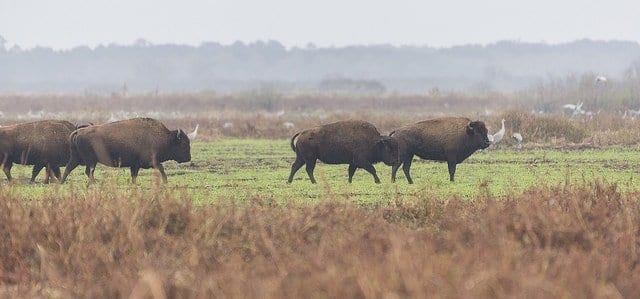
A herd grazing in Paynes Prairie Preserve State Park
Signed in May 2016 by U.S. President Barack Obama, the American bison became the national mammal of the United States. Called the National Legacy Act, conservationists, the National Park service and private land owners worked tirelessly to make it happen and helped to achieve it by helping bison herds to grow from 1,000 in 1890 to more than 500,000 today.
The American Bison is a piece of walking history and a piece of the Wild West and very much worth a trip to Yellowstone or to Florida to see.

